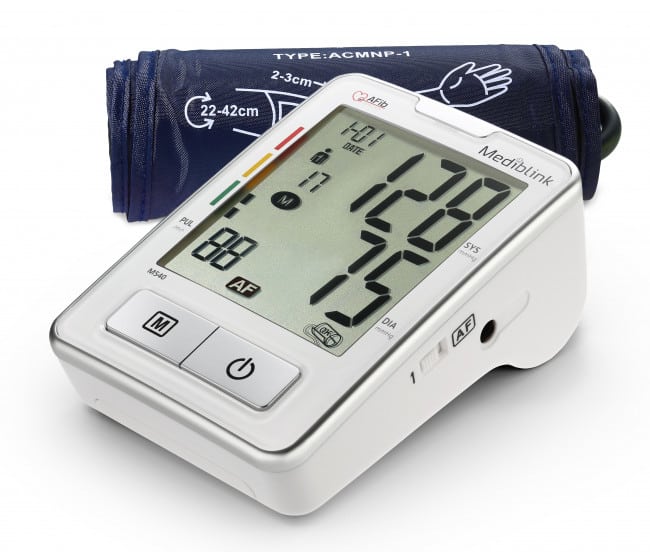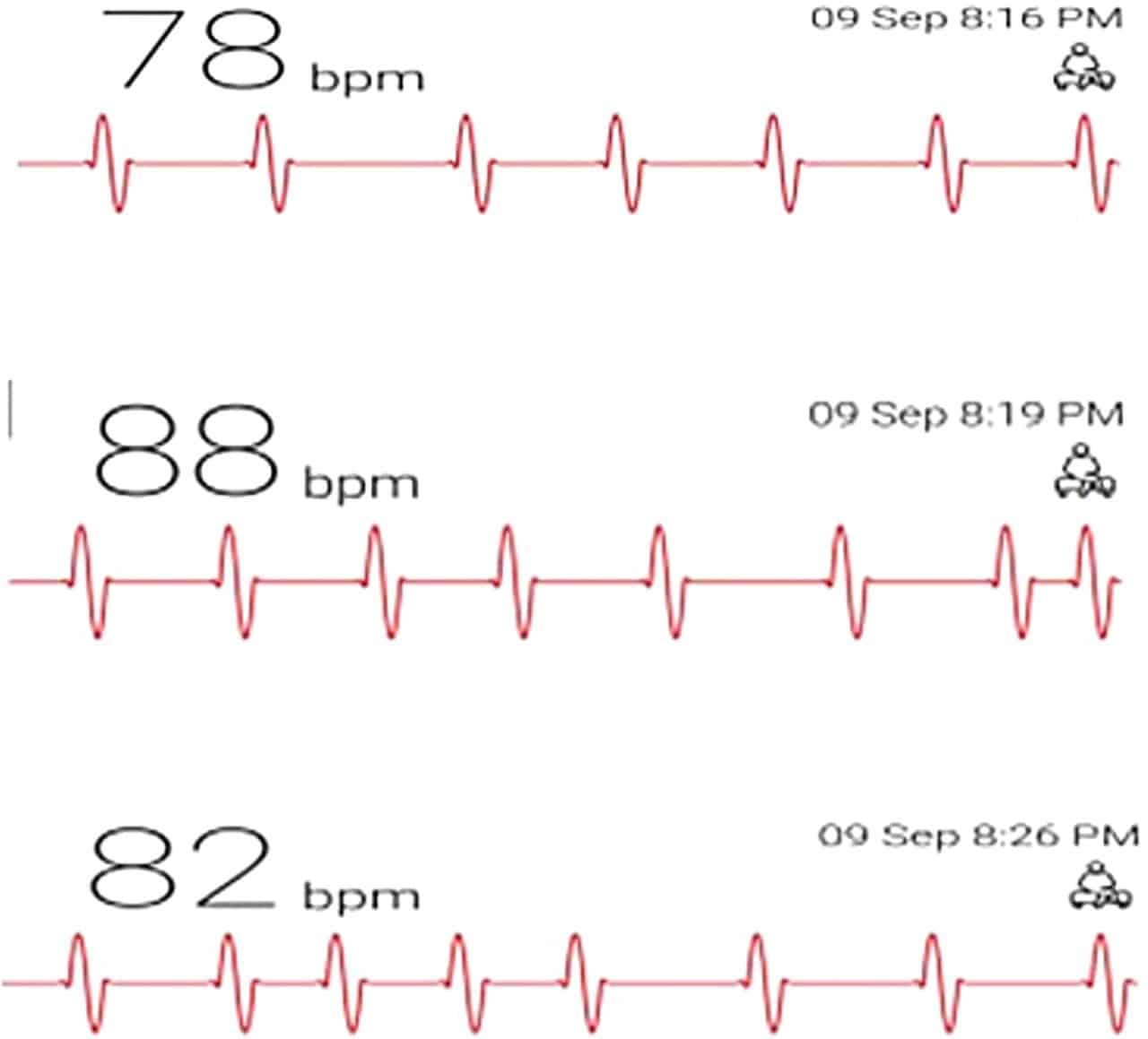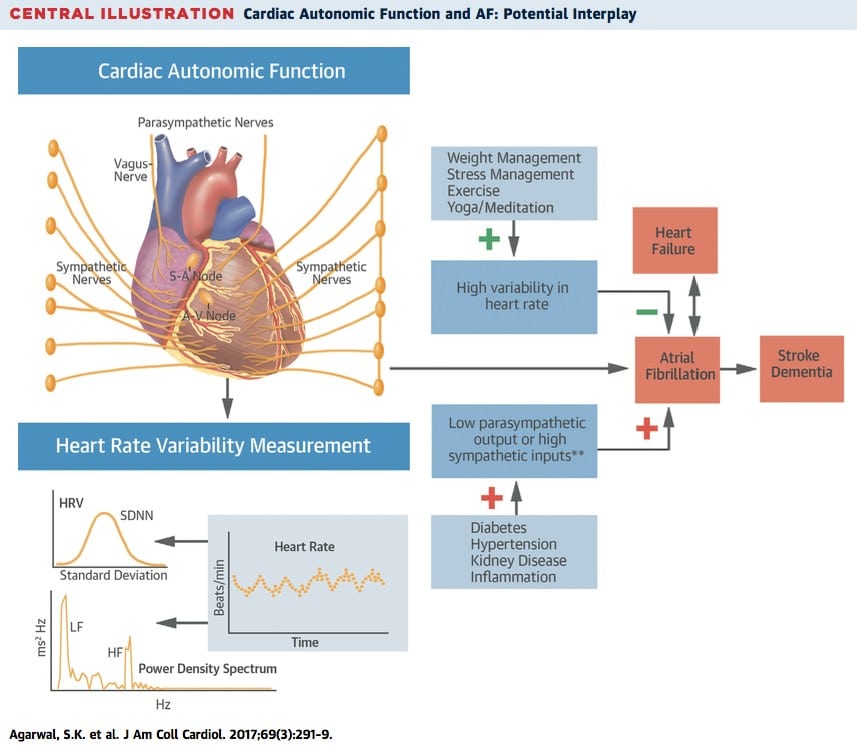Managing Your Symptoms For Long
You certainly want to keep your heart muscle healthy, but you need to think about your whole-body health, too. Reducing your elevated stroke risk should be a top priority when you live with AFib and high blood pressure. After all, hypertension doubles your stroke risk and AFib raises as much as five times higher than average.Fortunately, you have tools to help you manage both conditions. Once you know your blood pressure numbers and the nature of your AFib, you can compile an action plan with the help of your doctors advice and treatment options. There are a few steps to keep in mind that should help you reduce your health risks and your symptoms.
Additional Common Symptoms Of Atrial Fibrillation
Sometimes people with AFib have no symptoms and their condition is only detectable upon physical examination. Still, others may experience one or more of the following symptoms:
- General fatigue
- Fluttering or thumping in the chest
- Shortness of breath and anxiety
- *Chest pain or pressure
*Chest pain or pressure is a medical emergency. You may be having a heart attack. Call 911 immediately.
How Does Atrial Fibrillation Affect My Body
When youre in Afib, your hearts electrical system isnt working as it should. Your electrical impulses are chaotic, leading to an irregular and rapid heartbeat. When you feel your pulse isnt right, you might wonder whats going on inside your heart. Its helpful to learn more about the differences between a normal heartbeat and what happens when youre in Afib.
How your heart normally works
Your heart pumps blood to the rest of your body. During each heartbeat, your two atria contract, followed by your two lower chambers . These actions, when timed perfectly, allow your heart to work as an efficient pump. Your hearts electrical system controls the timing of your hearts contractions. And your sinoatrial node is normally in charge of that electrical system. This node is located in your right atrium. When your SA node fires an impulse, electrical activity spreads through your right and left atria . Both atria then contract and force blood into your ventricles.
The impulse then travels to the atrioventricular node, located near the middle of your heart. From there, the impulse moves to your ventricles, causing them to contract and pump blood out of your heart to your lungs and the rest of your body. This process repeats with every heartbeat. The SA node directs the timing of the electrical impulses and keeps your heart pumping smoothly.
What happens when youre in Afib
Also Check: How Long Do Home Blood Pressure Monitors Last
Key Points About Atrial Fibrillation
- AFib is an irregular heartbeat that occurs in the upper chambers of the heart.
- Feeling tired, weak, confused, or dizzy are all symptoms of AFib, but the most common is a quivering or fluttering heartbeat.
- To diagnose AFib, a doctor may look over your symptoms and medical history and conduct a physical examination.
- Seek medical help if you experience symptoms of AFib.
Duration Of Atrial Fibrillation

In some people, atrial fibrillation goes away on its own. In others, its a problem that lasts for years, and it may get worse over time.
Afib can be intermittent , coming and going in a way that seems random or only when you do certain activities.
An episode of this kind of afib usually lasts less than 24 hours, but may last as long as a week.
You may need treatment for paroxysmal atrial fibrillation, or it may happen infrequently enough that your doctor recommends just monitoring your condition.
Afib can also be persistent, meaning that it lasts for longer than a week. This kind of afib usually requires treatment.
Long-term persistent atrial fibrillation is defined as an abnormal heart rhythm that lasts over a year without interruption.
If a normal heart rhythm cant be restored after multiple treatments, your afib may be considered permanent. In this case, you may need to take medication to prevent the heart rate from being too fast.
Read Also: Low Blood Pressure And Heart Disease
You May Like: How Do You Know When Your Blood Pressure Is Low
Strategies To Avoid Hypotension During Afib Rate Control
Rapid ventricular response in atrial fibrillation patients is a daily occurrence in the emergency department.
Rapid ventricular response in atrial fibrillation patients is a daily occurrence in the emergency department.
Rate control through atrioventricular node-blocking agents is a standard approach for stable patients, while good old electricity works for those who are unstable. But there is an in-between group that presents a different challenge: those with atrial fibrillation who are relatively hypotensive, meaning they have a systolic blood pressure in the 90s or low 100s.
In these patients, pharmacologic rate control may improve systolic blood pressure by slowing the ventricular rate sufficiently to allow for adequate filling, and thus improve cardiac output. However, this is almost always balanced with the risk of hypotension caused by drugs like diltiazem or metoprolol.
In order to avoid the initiation of amiodarone or digoxinwhich are both notorious for their myriad of short-term adverse events, long-term toxicity, and clinically significant drug-drug interactionsthere are certain strategies that seem to be overlooked. These include the use of low-dose diltiazem, extended bolus diltiazem, or esmolol.
Traditional teachings of rate control with diltiazem point to doses starting at 0.25 mg/kg followed by 0.35 mg/kg if the first bolus is unsuccessful.
Esmolol is on its way to become one of the new favorite drugs in emergency medicine, at least in my opinion.
Can Atrial Fibrillation Cause Low Oxygen Saturation
Atrial fibrillation can cause respiratory compromise and in severe cases may result in decreased oxygen saturation requiring supplemental oxygen. In certain conditions decreased oxygen saturation is primarily due to lung disease and afib occurs secondary to that lung pathology. Examples include pneumonia and pulmonary embolism.
Also Check: Does Weed Lower Blood Pressure
Heart Conditions Are Risk Factors
The biggest risk factors for afib are older age and underlying heart disease, such as coronary artery disease or heart valve disease. Your risk is especially high after age 65.
Almost any heart condition can increase your risk for abnormal rhythm and damage your hearts structure.
Some of the most common heart conditions that can lead to atrial fibrillation include:
High Blood Pressure When your blood pressure the force of blood in your arteries is too high, your heart has to work harder than normal, which can lead to dysfunction.
Heart Valve Disease When your heart valves dont work properly, your heart can have trouble pumping blood.
Congenital Heart Defects Being born with a heart abnormality may mean youll eventually develop atrial fibrillation.
Heart Attack When blood flow to your heart becomes blocked, your heart muscle can suffer damage.
Heart Surgery Afib can develop right after heart surgery or as a later complication.
Cardioversion Can Cure A
To catch the gist of the myth, we need to understand what Cardioversion is. Giving shocks to the heart to maintain the rhythm of pumping blood is called Cardioversion. It ensures that the heart starts pumping blood properly, but it doesnt guarantee that one can maintain the pace for a long time. It is one of the most popular methods used to tackle A-fib.
Cardioversion is needed regularly to make the heart work properly and avoid any strokes.
Don’t Miss: What Are The 4 Worst Blood Pressure Medicines
What Causes Atrial Fibrillation To Start
Changes or damage to your hearts tissue and electrical system cause atrial fibrillation. Usually, coronary artery disease or high blood pressure causes those changes. Often a trigger heartbeat causes atrial fibrillation to begin. But sometimes its hard to know the cause of that triggered heartbeat. For some people, there is no identifiable cause. Research is constantly providing new information to help us learn more about the
Afib often runs in families. So, if a close family member has Afib, you have a family history and therefore a higher chance of developing it, too.
Epidemiologic Parallels Between Htn And Af
HTN is the most common cardiovascular disorder and AF is the most common clinically significant arrhythmia. Both conditions are associated with aging and often coexist.1720 In some studies, up to 90% of AF patients are observed to be hypertensive .2123 Beyond the direct relations between AF and HTN, HTN is also associated with other cardiovascular comorbidities that increase risk for AF, including coronary artery disease, heart failure, metabolic syndrome, chronic kidney disease, and sleep apnea.2427
Prevalence of hypertension in atrial fibrillation trials. AF: atrial fibrillation. Adapted with permission from Manolis et al. J Hypertens 2012 30:23952.16
Higher pulse pressure has also been shown to increase the risk of developing AF.28 In a prospective study involving Framingham Heart Study and Offspring participants, each 20 mm Hg increase in pulse pressure was associated with a 24% increased risk of AF over a 20-year follow-up. Notably, models were adjusted for mean blood pressure and other clinical risk factors for both AF and HTN. This suggests that increased pulse pressure may be an independent predictor of arterial stiffness and capture an additional modifiable AF risk element distinct from systolic hypertension.28
Read Also: How To Read Blood Pressure Reading
High Blood Pressure Causes Atrial Fibrillation
Sophia Antipolis, 09 February 2021: The first evidence from genetic data that high blood pressure is causally associated with the most common heart rhythm disorder is published today in the European Journal of Preventive Cardiology, a journal of the European Society of Cardiology .1
Study author Dr. Georgios Georgiopoulos of Kings College London, UK and National and Kapodistrian University of Athens, Greece said: Establishing that elevated blood pressure causes atrial fibrillation provides further impetus for public health strategies aimed at improving blood pressure control in the general population and for individual efforts to keep levels in check.
Atrial fibrillation is the most common heart rhythm disorder, affecting more than 40 million individuals globally.2 People with the disorder have a five times greater risk of having a stroke. Previous studies have shown an association between high blood pressure and developing atrial fibrillation, but there was no strong evidence of direct causality.
To investigate whether blood pressure has a direct impact on the risk of atrial fibrillation, the researchers conducted a naturally randomised controlled trial called Mendelian randomisation. They used data from the largest genome-wide association study on blood pressure and atrial fibrillation which included more than one million individuals of European ancestry of which 60,620 had atrial fibrillation and 970,216 did not.
Pulmonary Embolism With Atrial Fibrillation

Patients with pulmonary embolism are at an increased risk of developing AF.
Statistics say that 15-21% of the patients with pulmonary embolism develop afib as compared to only 2-3% of the general population.
The presence of AF secondary to pulmonary embolism is one of the reasons for low oxygen saturation in patients with atrial fibrillation.
Pulmonary embolism itself is a dangerous condition & is the 3rd largest cause of cardiovascular mortality, the 1st two being coronary artery disease and stroke, respectively. It occurs in 0.1% of the population annually and when combined with AF, it is associated with further worsening of outcomes.
The risk factors for the development of new-onset afib with pulmonary embolism include massive pulmonary embolism, ischaemic heart disease, and congestive heart failure.
Symptoms of atrial fibrillation and pulmonary embolism are overlapping, the most common being shortness of breath, palpitations, and tachycardia. This is the reason that the diagnosis of pulmonary embolism can easily be missed in patients presenting with afib.
The diagnosis of PE is confirmed on CTPA.
Echocardiography may also help in establishing the diagnosis.
Treating the PE may correct afib & restore sinus rhythm spontaneously.
Don’t Miss: How To Maintain Healthy Blood Pressure
How Common Is Atrial Fibrillation
Some researchers have called Afib the new cardiovascular disease epidemic of the 21st century. Afib is especially common among older adults. Over 33 million people age 55+ have been diagnosed globally. Estimates predict that 12 million people in the U.S. will have Afib by 2030. Afib causes nearly half a million yearly hospitalizations in the U.S. and leads to more and more deaths with each passing year.
Changes To Lifestyle With Af
As described above, AF is strongly associated with hypertension , sedentary behaviour and obesity. Lifestyle changes can help to prevent and manage AF and reduce the risk of subsequent ill health. Your doctor may suggest that you:
- take measures to control high blood pressure
- aim to best control diabetes
Also Check: Can Aleve Raise Blood Pressure
How To Reduce Stroke Risk
Stroke is not inevitable, even if you are among the millions with high blood pressure or atrial fibrillation. Preventing or controlling high blood pressure and atrial fibrillation can greatly lower your chances of having a stroke. Heres how:
- Take your medication as prescribed if you have high blood pressure or atrial fibrillation.
Stroke prevention is often the focus of doctor-patient conversations in atrial fibrillation, Dr. Sacco said. But for people with high blood pressure, busy physicians dont always rank discussions about preventing stroke as high as wed like, he said. We have so many very effective medicines to treat high blood pressure and atrial fibrillation. If more patients with high blood pressure and atrial fibrillation are properly treated, were optimistic the number of projected strokes will go down.
No Symptoms Post Medication Mean That You Are Cured
One needs to understand the fact that A-Fib cannot be cured the effects of A-Fib can be reduced by regular medication and Ablation. Ablations are not required until the medicines are working fine, and A-Fib symptoms are not triggered frequently. You need to take precautions like quitting smoking, doing heavy exercises, and limited caffeine use. A-fib can be triggered due to stress, heavy exercise, and sleep deprivation. If you can manage these conditions, then you will have minimal consequences.
Read Also: Where Can I Get Blood Pressure Taken
What You Should Know About Atrial Flutter
While atrial fibrillation is one of the better-known heart rhythm disorders, it isnt the only one. Another common heart arrhythmia is called atrial flutter. Both arrhythmias can cause a rapid heart rate and increase risk for stroke. There are so many similarities that I frequently refer to atrial flutter as the cousin of atrial fibrillation.
While atrial flutter shares many similarities with AFib, there are a few key differences to discuss.
How Does Afib Lead To Stroke
- The heartbeat seems to quiver in an erratic way. The upper chambers of the heart do not produce an effective, regular contraction, but contract irregularly.
- The contraction fails. Imagine wringing out a sponge. Without a good squeeze, water will still be left in the sponge. In the same way, when a heart contraction is either too fast or too uneven, it doesnt completely squeeze the blood from the atria into the next chamber.
- Blood pools in the atria. Blood not completely pumped out of the atria can remain and may pool there.
- Risks of clotting go up. When blood has the opportunity to pool, it also has the opportunity to clot.
- Clots can travel and cause blockages. If a blood clot forms in the atria, it can be pumped out of the heart to the brain, blocking off the blood supply to an artery in the brain, causing a stroke. This type of stroke is called an embolic stroke or some doctors call it a cardioembolic stroke.
You May Like: Claritin And Blood Pressure Meds
Also Check: Does Thick Blood Cause High Blood Pressure
Detection Of Hypotension Therapy
The ability of NIBP to detect a mean BP < 65 mm Hg or an intra-arterial systolic BP > 140 or < 90 mm Hg was similar in patients with arrhythmia and patients with regular rhythm . Fifty-nine patients with arrhythmia and 47 patients with regular rhythm underwent a cardiovascular intervention. For the detection of responders to therapy , the AUCROC was similar between patients with arrhythmia and patients with regular rhythm .
Oscillometric detection of hypertension, hypotension, and response to urgent therapy. Response to therapy was defined by a > 10% increase in intra-arterial mean BP after a cardiovascular intervention. The analysis was based on the mean of three consecutive measurements with each technique . Data are presented as receiver operating characteristic curves. AUCROC: area under the ROC curve .
Other Health Conditions Can Also Raise Your Risk

Some other health conditions can raise your risk of afib, including:
Sleep Apnea This condition is marked by pauses in your breathing during sleep.
Diabetes When there is too much glucose in your blood, heart damage or neurological damage can occur.
Hyperthyroidism This condition occurs when your thyroid gland makes too much thyroid hormone, which can cause neurological disruption.
Emphysema This is a form of chronic obstructive pulmonary disease that damages the air sacs in your lungs and makes it hard to breathe.
Pulmonary Embolism This happens when a blood clot, usually in your leg, breaks off and travels to block an artery leading to your lungs.
Also Check: What’s The Normal Blood Pressure Rate
How Are Heart Attack Symptoms Different From Afib Symptoms
Fluttering and palpitations are key symptoms of AFib and is the key difference, but many heart problems have similar warning signs. If you think you may be having a heart attack, DONT DELAY. Get emergency help by calling 911 immediately. A heart attack is a blockage of blood flow to the heart, often caused by a clot or build-up of plaque lodging in the coronary artery . A heart attack can damage or destroy part of your heart muscle. Some heart attacks are sudden and intense where no one doubts what’s happening. But most heart attacks start slowly, with mild pain or discomfort. Often people affected aren’t sure what’s wrong and wait too long before getting help.